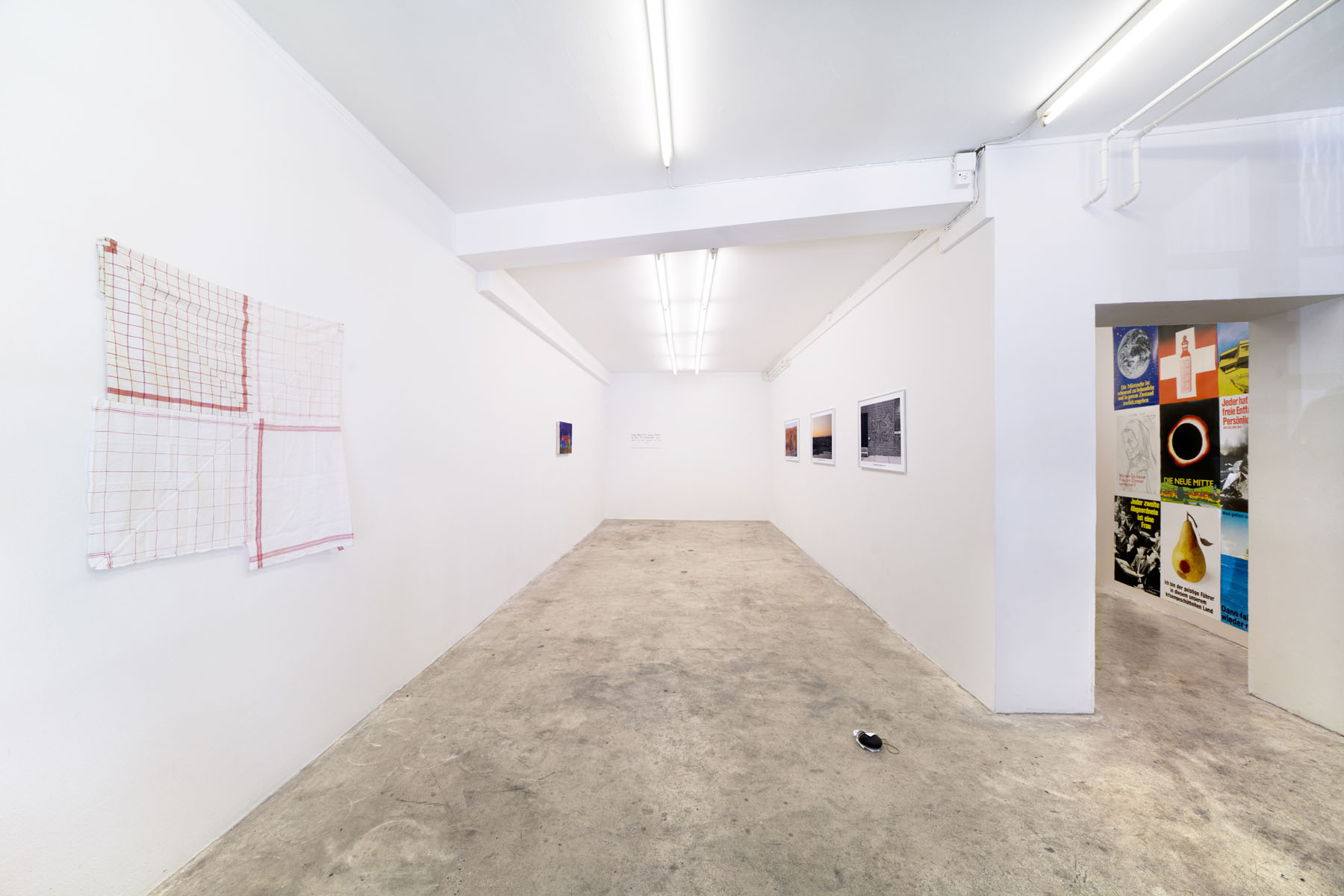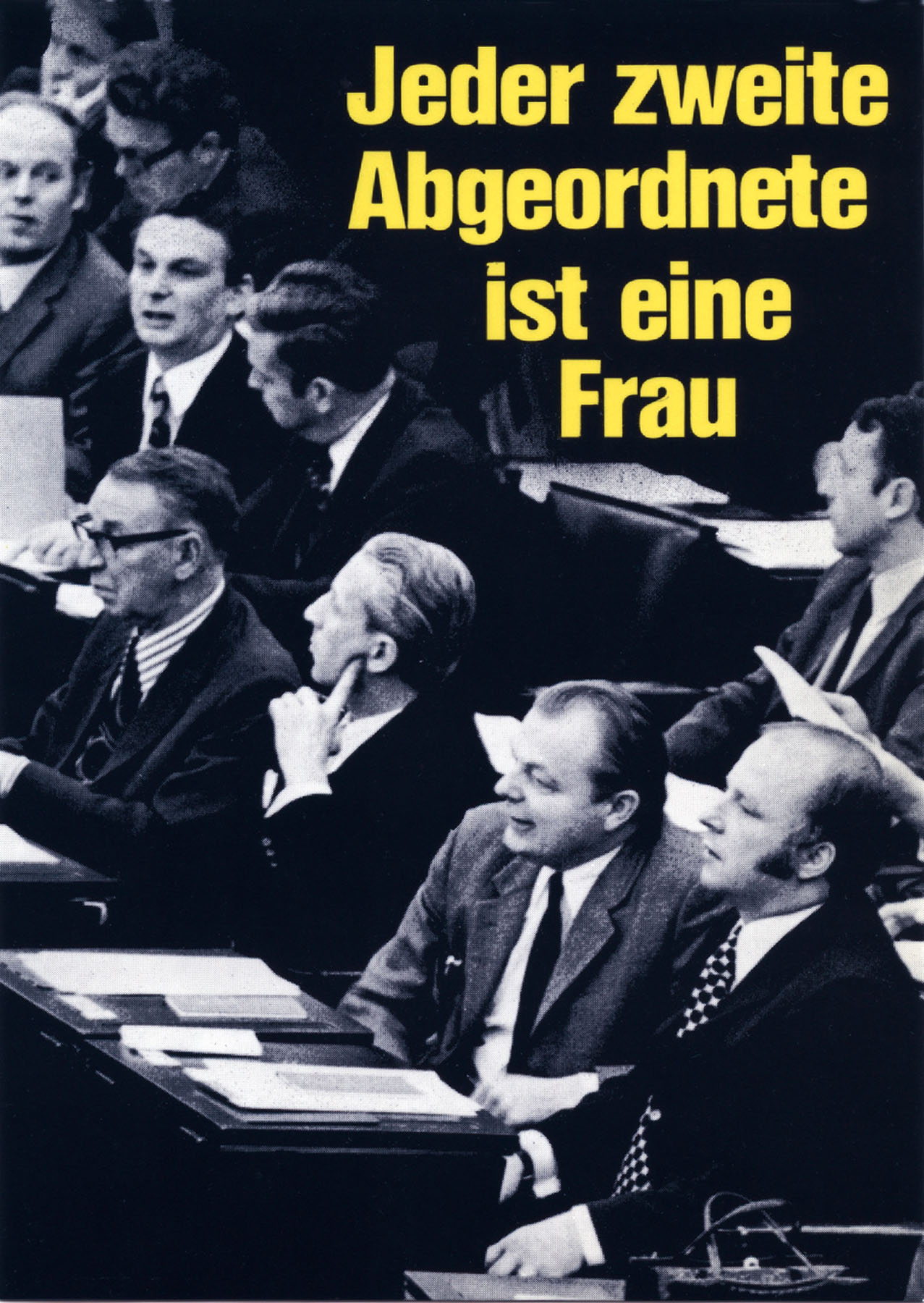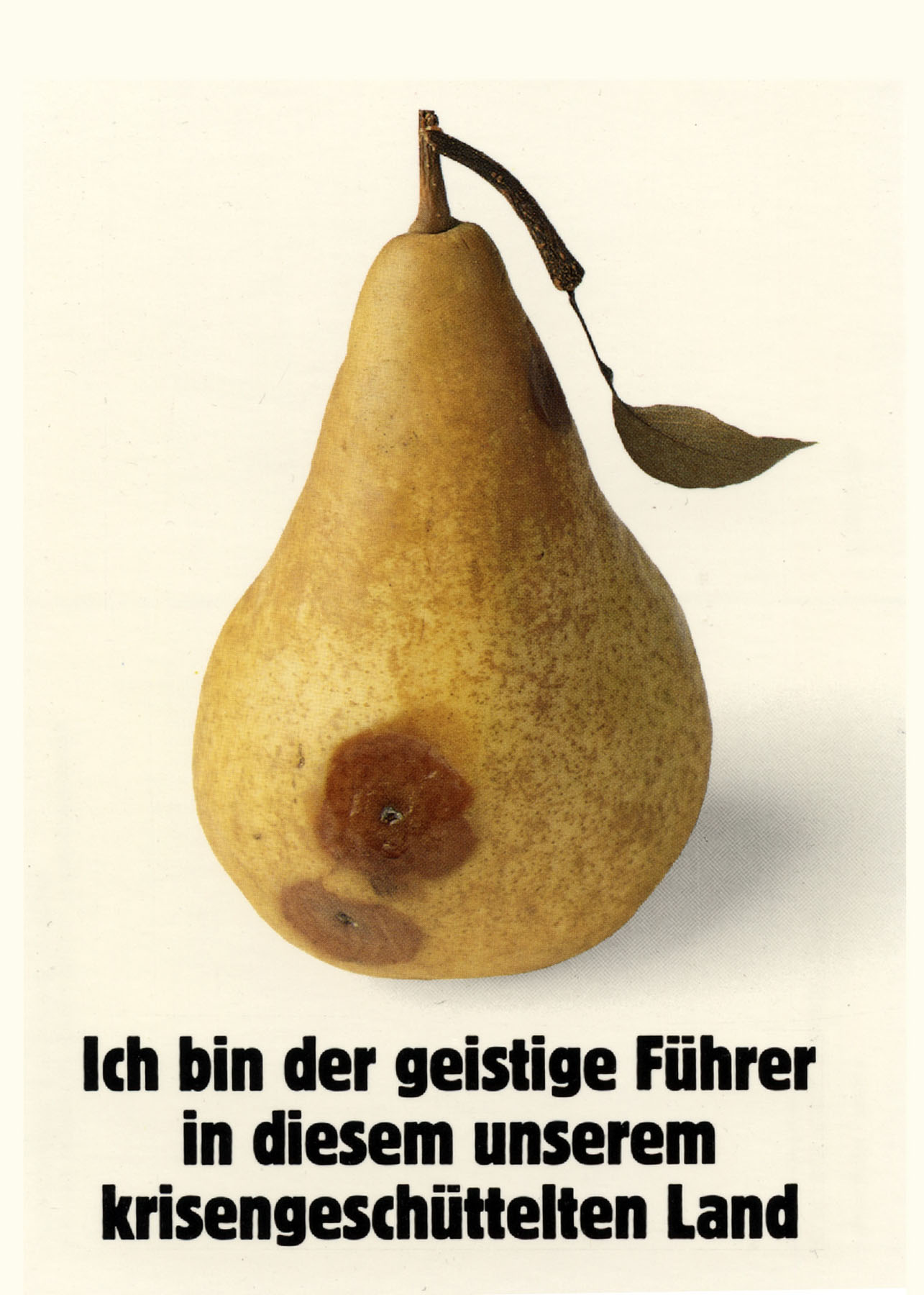Artists: Florence Jung, Lucie Kolb, Ivan Mitrovic, Fabian Peña, Sam Pulitzer, Nina Rieben, Bea Schlingelhoff, Klaus Staeck, Axelle Stiefel, Ramaya Tegegne, Gian-Andri Töndury
Exhibition title: For
Venue: Milieu, Bern, Switzerland
Date: June 28 – August 1, 2020
Photography: Claude Barrault / all images copyright and courtesy of the artists and Milieu, Bern
Study
Lucie Kolb
My thoughts about what «study» is, or could be, are based on the book The Undercom-mons, by Stefano Harney and Fred Moten from the year 2013. The book critiques the institution of the university in North America, where education increasingly takes place in economized and measurable forms. Tuition fees, for instance, are often so high that they exclude many people from university education, put others into debt for decades, and recast the act of learning itself as the earning of credits. Drawing a connection with the history of Black emancipatory knowledge production, Harney and Moten sketch an alternative form of learning — «study.» This doesn’t happen only in classrooms after the bell rings and the teacher begins to speak, but also in the hallway, on the stairs, and with those of us who, because of the children they had to raise, their job, or the distance they had to travel, never found their way into the classroom. «Education» is measura-ble, testable, it’s about progress and it consists in the acquisition of a series of degrees. «Study,» on the other hand, requires neither measurability nor the notion of progress. Taking a stroll or having a chat aren’t specifically aimed at building knowledge or skills. Such activities are identified as study in The Undercommons, both as a means of refe-rencing the knowledge inherent in these interactions, and of promulgating an alternative history of thought that is tightly bound to marginalized, disenfranchised and dislocated figures and to their emancipation.
Despite this rather specific context — or perhaps because it — I find myself drawn to «study» as a form of resistant knowledge production, both within the university and out-side of it. Reading The Undercommons for the first time, even before connecting with its subject matter, it was the tone, the rhythm, the tempo of the text which got under my skin. Terms such as study are purposefully reiterated and variegated. Again and again they slip beyond one’s grasp. It doesn’t seem to be about creating a definition which the reader could summarize and then reuse in another context. That makes the book a difficult read for someone like myself, who is accustomed to filtering concepts out of texts. All this impedes the composition of the present text, whose aim is to present an outline of what study is or can be, and to explore how we as White artists and critics can practice it or show our solidarity towards it. Fred Moten makes the helpful compa-rison between the act of writing and a child’s play with objects, in which these are given names, roles and characteristics which can change abruptly during the course of the game. Writing may be treated as a form of improvisation, speculative at base, that aims at the creation of new worlds.
It would be insufficient to view study as being a critical practice. What is understood by this term could, if we wish, be seen as behaving «critically» towards criticism. For I am critical of institutions and persons that are important to me, that I want to foster, to optimize, even to reform. Study begins more fundamentally. It advocates an equivalency between the critical impetus, critical infrastructure, roles and the conditions of produc-tion. As with children’s games, this requires a box that we can use together, fishing out objects whose roles and rules we can provisionally define — and then change — in full awareness that we are playing a game.
For, 2020, exhibition view, Milieu, Bern
For, 2020, exhibition view, Milieu, Bern
Axelle Stiefel, The Red Thread (After L.B.), kitchen towels, 107 x 93 cm, 2020
For, 2020, exhibition view, Milieu, Bern
Ivan Mitrovic, Boathouse on the Ardfin Estate, 60 x 40 cm, oil on canvas, 2020
For, 2020, exhibition view, Milieu, Bern
Sam Pulitzer, Off Pennsylvania Ave, C-prints, printed perspex, 59.4 x 84.1 cm, 2020
Sam Pulitzer, Cross Bay Blvd, C-prints, printed perspex, 59.4 x 84.1 cm, 2020
Sam Pulitzer, 11th St, C-prints, printed perspex, 59.4 x 84.1 cm, 2020
For, 2020, exhibition view, Milieu, Bern
Bea Schlingelhoff, Typeface named after and dedicated to Ella Trebe, otf file, 2017
For, 2020, exhibition view, Milieu, Bern
For, 2020, exhibition view, Milieu, Bern
Gian-Andri Töndury, This is not a time for metaphors, HD-video, 10‘40‘’, 2020
Gian-Andri Töndury, This is not a time for metaphors, HD-video, 10‘40‘’, 2020
Ramaya Tegegne, Materials/Bechdels, edition of 500, distributed by the shops nearby Milieu, 35 x 46 cm, 2019
Lucie Kolb, Studium/Study, 2020
For, 2020, exhibition view, Milieu, Bern
For, 2020, exhibition view, Milieu, Bern
Klaus Staeck, Mietsache, Plakat, 84 x 59.4 cm, 1983
Klaus Staeck, Aktionär, Plakat, 84 x 59.4 cm, 1975
Klaus Staeck, Deutsche Arbeiter, Plakat, 84 x 59.4 cm, 1972
Klaus Staeck, Sozialfall, Plakat, 84 x 59.4 cm, 1971
Klaus Staeck, Die neue Mitte, Plakat, 84 x 59.4 cm, 1999
Klaus Staeck, Persönlichkeitsentfaltung, Plakat, 84 x 59.4 cm, 1974
Klaus Staeck, Gleichberechtigung, Plakat, 84 x 59.4 cm, 1976
Klaus Staeck, Der geistige Führer, Plakat, 84 x 59.4 cm, 1982
Klaus Staeck, Land unter, Plakat, 84 x 59.4 cm, 1995
For, 2020, exhibition view, Milieu, Bern
Ivan Mitrovic, Das demokratische Paradox, Migros solidarity flag, 100 x 100 cm, 2020
Fabian Peña, dankgate clip 001, HD-video, 5‘48‘’, 2018
Fabian Peña, dankgate clip 001, HD-video, 5‘48‘’, 2018
For, 2020, exhibition view, Milieu, Bern
Nina Rieben, Intro, window, stone, note, installation variable, 2019
Nina Rieben, Intro, window, stone, note, installation variable, 2019

































